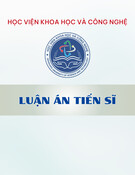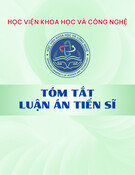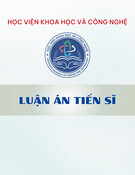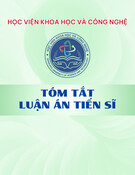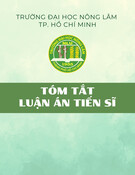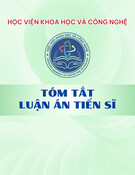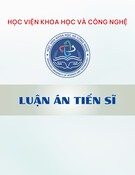
1
Chapter I: INTRODUCTION
1. Necessity of the dissertation
Polianthes tuberosa L. is one of the most popular cut flowers in the
tropics and subtropics. In Vietnam, it helps farmers get more income than
rice and other crops do. Thus, it has been included in the crop restructuring
program and considered a poverty reduction crop in the provinces: Tien
Giang, Dong Thap, Can Tho and An Giang. Nowadays, there are only two
varieties of tuberoses with 6 petals and 12 petals which are mainly
cultivated in the Mekong Delta.
However, the propagation of tuberose is mainly rooted through
generations leading to serious degeneration, pest infestation and significant
reduction in productivity. Therefore, the demand for new varieties is
exigent. In addition, breeding of tuberose in the traditional way has
encountered some limitations due to high incompatibility because the
flowers have stigmas and stamens which are not ripe at the same time and
this is the reason why their seeds are not created under natural conditions
(Estrada-Basaldua et al., 2011). Moreover, only the single petal flowers can
produce seeds, but it is difficul for the seeds to sprout. Perhaps, the mutation
is the best way to breed a new tuberose variety. Among physical mutagenic
agents, gamma rays are most widely used because of their effectiveness
(Matsumara et al., 2010). This technique increases genetic variation in some
type of flowers such as changes in color, shape, growth characteristics, etc
(Xu et al., 2012). Furthermore, in vitro culture should be applied to increase
the number of irradiated samples. Propagation of tuberose in vitro has been
experimented (Huynh Thi Hue Trang et al., 2007; Hutchinson et al., 2004).
Whereas, growth culture and irradiation are the effective methods to make
plants uncontaminated, multiply rapidly and mutate. This combination is
successfully applied on palms, apples, potatoes, sweet potatoes and









